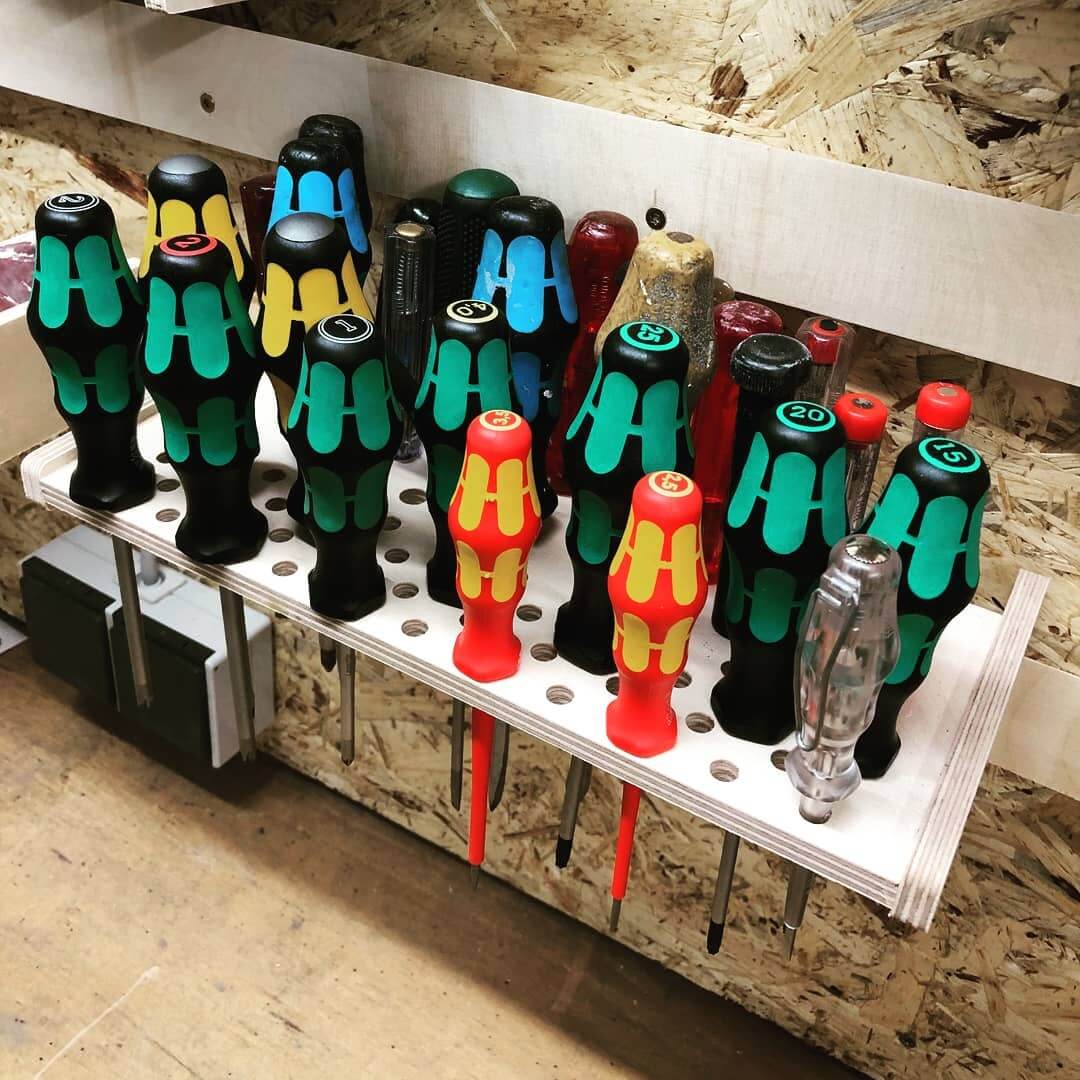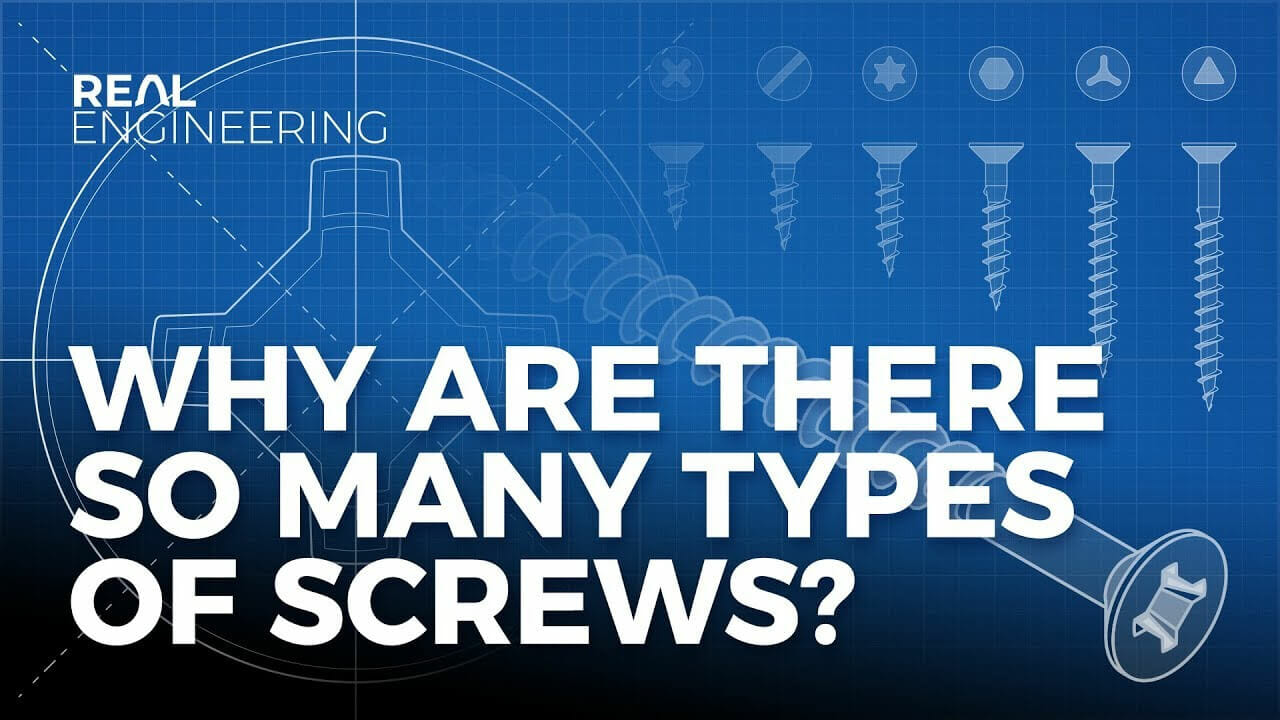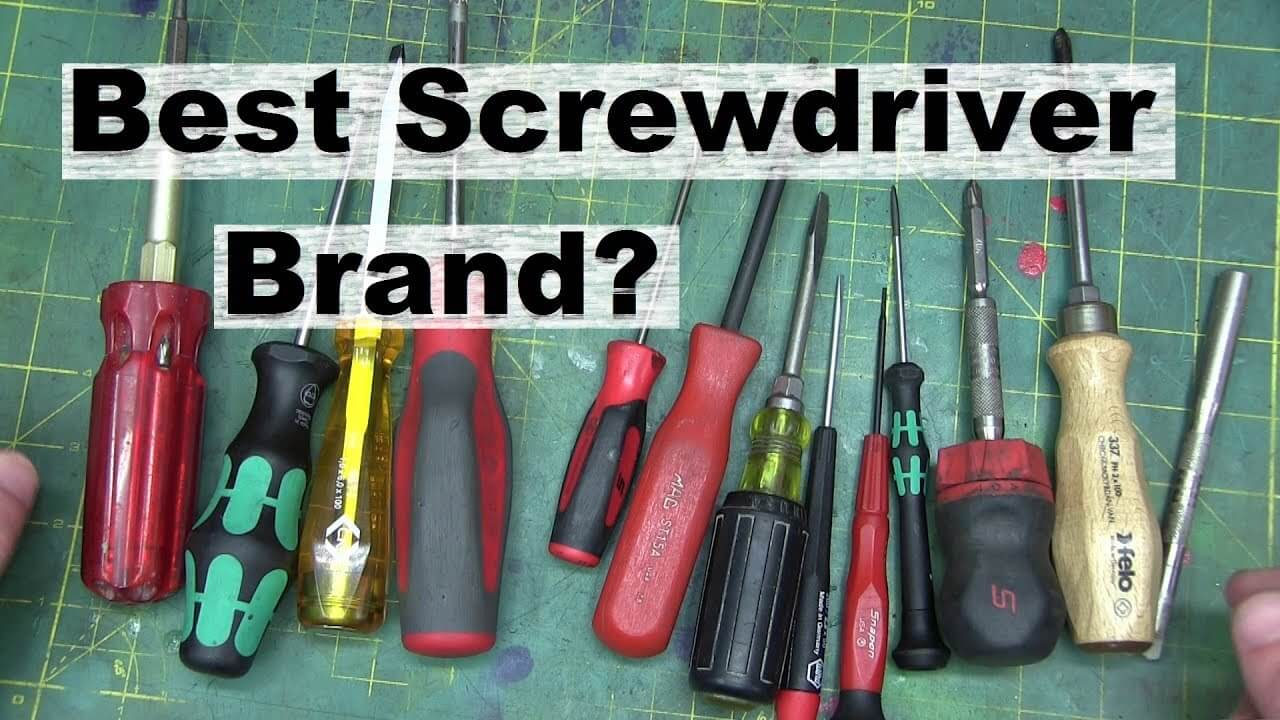14 Different Types of Screwdrivers and Their Uses
Confused by the array of screwdrivers in your toolkit? Discover which type is perfect for your next DIY project.
In a Nutshell:
Different screwdriver types serve unique purposes. The flat head, ideal for woodworking, and the Phillips head, with its snug fit, are essential for most household tasks. For specialized projects, the Torx is crucial in automotive and electronics, while the Hex (Allen Wrench) is a must-have for furniture assembly. The square head (Robertson) screwdriver, less known but highly efficient, provides high torque, useful in automotive and furniture work. Choosing the correct screwdriver not only eases the task but also prevents potential damage to the screws or the workpiece.
Types of Screwdriver Mechanisms
Before we discuss the different screwdriver designs you should know, let’s spend some time going over the different types of screwdriver mechanisms on the market today.
These mechanisms range from the basic manual model to the modern power screwdriver.
- Manual screwdriver: A manual-type screwdriver is the most basic screwdriver body you can find in a tool shop. These screwdrivers typically have a wide handle and a narrower tip that you will need to turn manually to insert or unscrew a screw head.
- Ratcheting screwdriver: Ratcheting-type screwdrivers are a step above manual ones in efficiency and ease of use. This type of screwdriver utilizes an internal mechanism that allows you to tighten a screw with a back-and-forth wrist motion rather than a full rotation of the driver. As a result, you will not need to lift and reposition the handle after each spin.
- Torque screwdriver: Torque screwdrivers utilize unique internal components that create uniform, precise tension when tightening a screw.
- Yankee screwdriver: The Yankee-type screwdriver uses a spring-loaded, internal ratcheting mechanism that allows you to tighten screws with a firm push of the handle.
- Power screwdriver: Power screwdrivers utilize a power source, such as a battery or cord, to tighten screws with the push of a trigger. You can even purchase power tools that allow you to swap out the drill bits with screwdriver bits. The best power drills come with a wide range of drill and screwdriver bits for your convenience.
If you use screwdrivers regularly, you’ll probably want to lose your manual screwdriver in favor of a more efficient version, such as a Yankee or power option.
However, if you only bring out your tool kit on occasion, a manual or ratcheting screwdriver with several different head replacements should suffice.
Common Screwdriver Types
The first five types of screwdrivers we will discuss are ones you may need for household projects, basic furniture building, and minor appliance repair.
These are the most common screwdriver types in America, and you probably already have one or two of them in your toolbox.
Your Guide to Screwdriver Types and Their Smart Uses
| Screwdriver Type | Features | Benefits | Pros | Cons |
|---|---|---|---|---|
| Flat Head | Wedge-shaped, wide, flat tip | Versatile, used on slotted and Phillips-head screws | Common and versatile | Can damage screw if not properly fitted |
| Phillips Head | Angled, cross-shaped tip | Fits snugly, prevents slippage | Prevents slipping, widely used | Can cam out at high torque |
| Torx | Trademarked six-point-star head | High torque tolerance, technical applications | Exceptional torque, secure fit | Not as common for everyday use |
| Hex (Allen Wrench) | Hexagon-shaped head | Ideal for large screws, hexagonal recess | Comfortable, versatile for furniture | Requires specific matching screw |
| Square Head | Square-shaped tip | Higher torque, automotive and furniture use | High torque, gaining popularity in US | Less common in US, specific uses |
| Frearson | Pointed, cross-shaped tip with sharper edges | Higher torque, larger screws | Versatile for different sizes | Less common than standard types |
| Clutch Head | Bow-tie-shaped tip with narrower middle | Fits specific screws, RVs, older automobiles | Unique fit for specific applications | Limited use, not widely known |
| Japanese Industrial Standard (JIS) | Thin, cross-shaped tips | Does not cam out, common in Japanese products | Precision, avoids damaging screws | Specific to Japanese products |
| Tri-Wing | Pinwheel-shaped tip with three linear wings | Fits triangular-slotted screws, aerospace, electronics | Useful in specialized industries | Limited to certain industries |
| Micro Tri-Angle | Triangular recess in tip | Suitable for toys, electronics, specific applications | Control for triangular screws | Not widely used, specific to screws |
| Tri-Point | Blade with three points creating a Y-shape head | Used in small electronics like Apple, Nintendo | Specific to smaller devices, precise fit | Limited to small electronics |
| Nut Driver | Hexagonal socket instead of tip or blade | Works like socket wrench, useful for recessed bolts | Easy navigation in tight areas | Bulkier than traditional screwdrivers |
| Pozidriv | Cross-shaped blade with ‘X’ shape over cross tip | Prevents cam-out, different from Phillips | Accurate, prevents damaging screws | Not interchangeable with Phillips |
| Spanner | Tuning fork-like tip with two sharp tines | Secure and tamper-proof, public areas | Tamper-resistant, increases security | Requires specialized tool for removal |
Note: The right screwdriver turns a task into a triumph, ensuring every twist is not just a turn, but a step towards perfection.
1 | Flat Head
The flathead screwdriver—also known as the slotted, straight, or flat-blade driver—is one of the most popular screwdrivers in the U.S. This screwdriver features a wedge-shaped, wide, flat tip.
You can use a flat head screwdriver to insert or remove screws that have a linear notch in the screw head.
You can also use flatheads on Phillips-head screws in many cases—just insert the screwdriver in one of the cross slots in a Phillips-head screw. If you have a screw with a recess-type of notched head, the size of the screwdriver’s tip will make a difference.
Flathead screws are standard in the woodworking and carpentry industries, as their appearance is less noticeable than other types of screws. Cabinet makers, for example, often keep slotted drivers on hand to apply finishing details to their cabinets.
You can also use flat-head screwdrivers to pry open cans or chisel small areas, but you should make sure not to damage the blade if you try out one of these alternative uses. If you only keep one screwdriver on hand, the flat-head is probably your wisest choice.
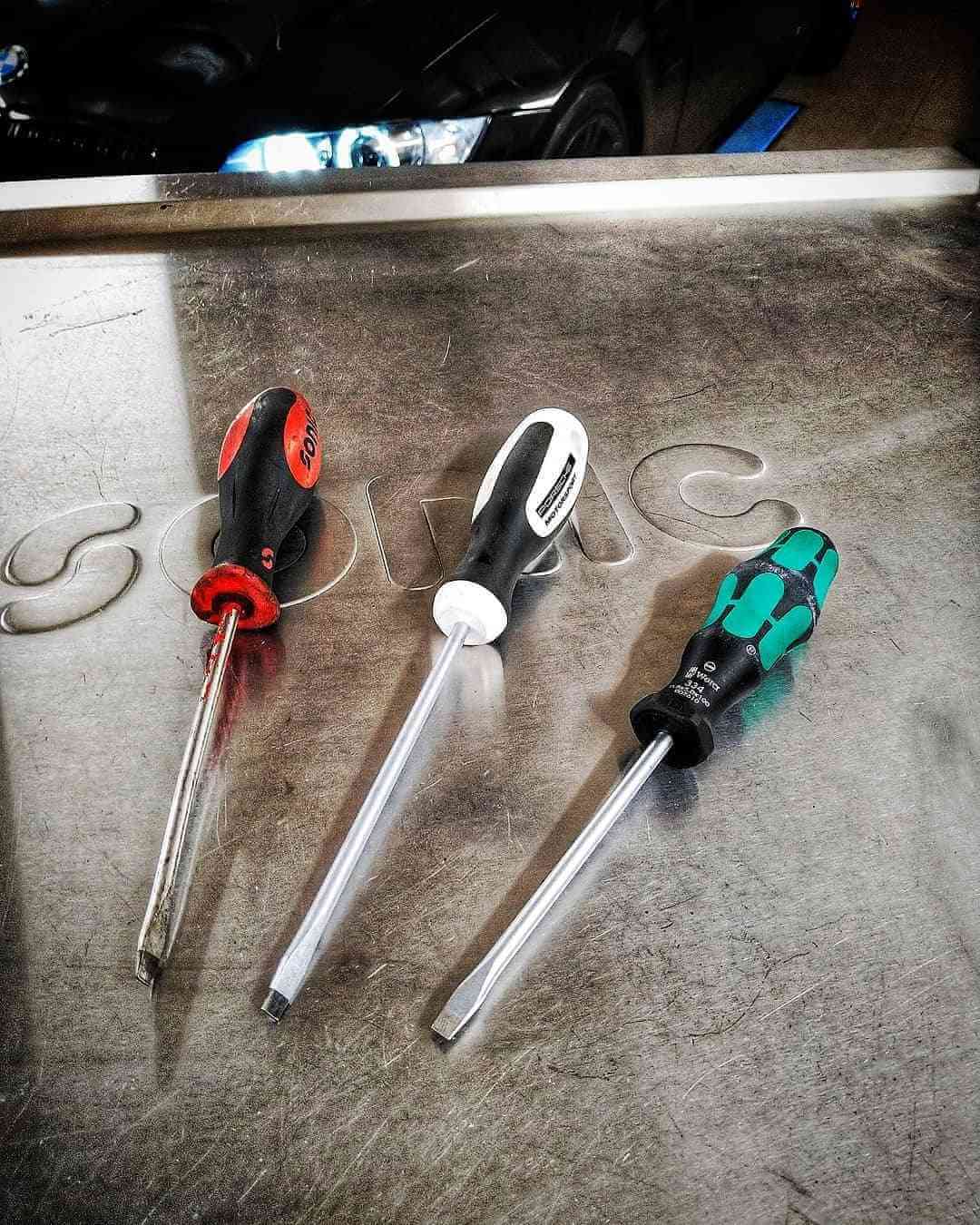
2 | Phillips Head
The Phillips head—also known as crosshead— driver is another basic driver you should keep in your tool kit. The Phillips screwdriver features an angled, cross-shaped tip.
Unlike the slotted screwdriver tip, which can easily slip out of the screw head during use, Phillips screwdrivers fit into the Phillips screw head snugly. Only when the screw reaches a specific torque limit does this screwdriver type “cam out” or slip out of the head.
You will find Phillips-head screws across various applications, ranging from basic appliances to Ikea furniture pieces to intricate electronics.
Keeping this type of screwdriver in your toolbox is a smart idea whether you use tools frequently or only need to tighten the occasional kitchen cabinet.
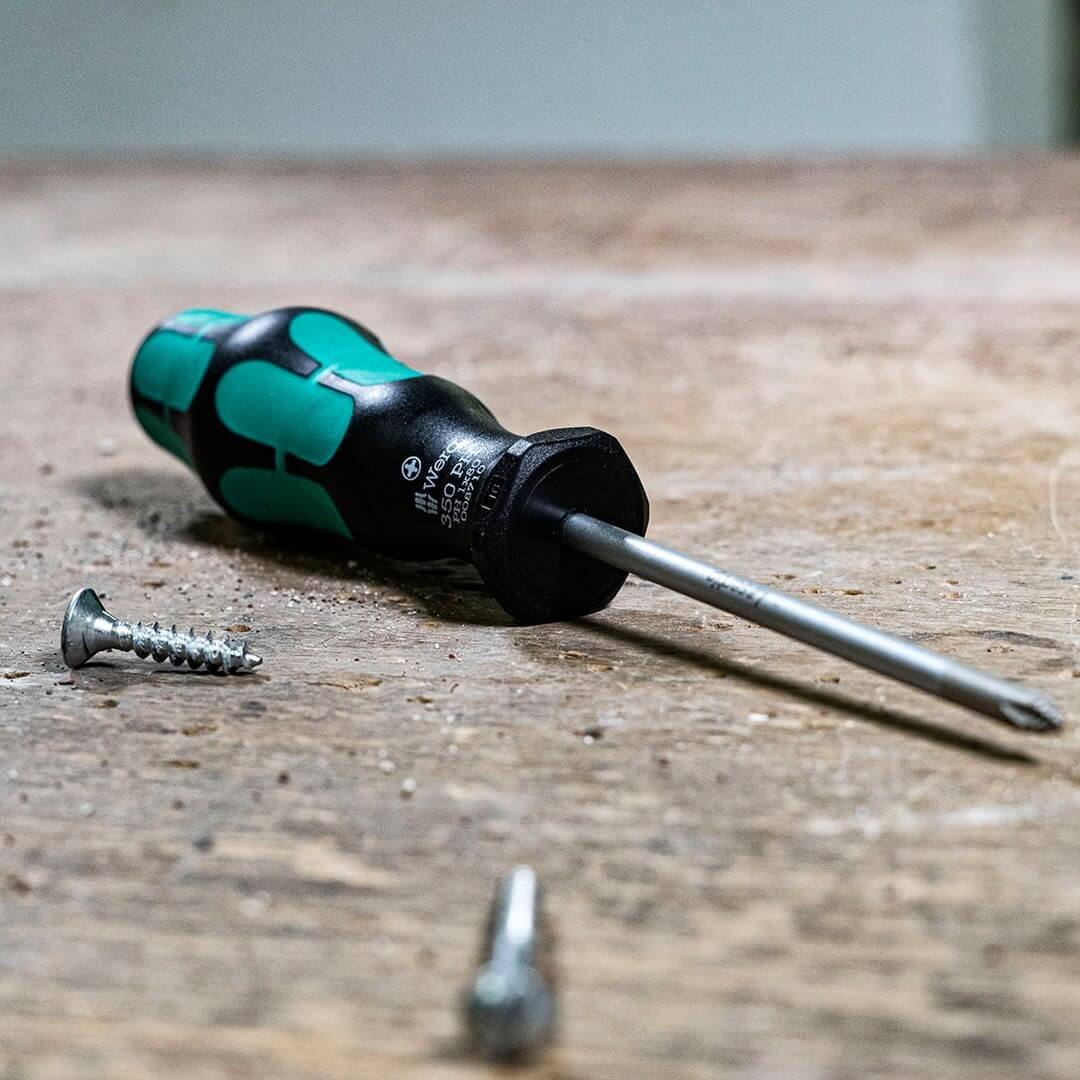
3 | Torx
The Torx screwdriver—also known as the “star” or Torx security version screwdriver—is popular in the automotive and security business.
This screwdriver features a trademarked six-point-star screw head that gives the tool exceptional torque tolerance.
You can find Torx screws in complex, technical applications, such as cars, motorcycles, bicycles, computers, and small electronics. In recent years, Torx screws have also become more prominent in the construction industry.
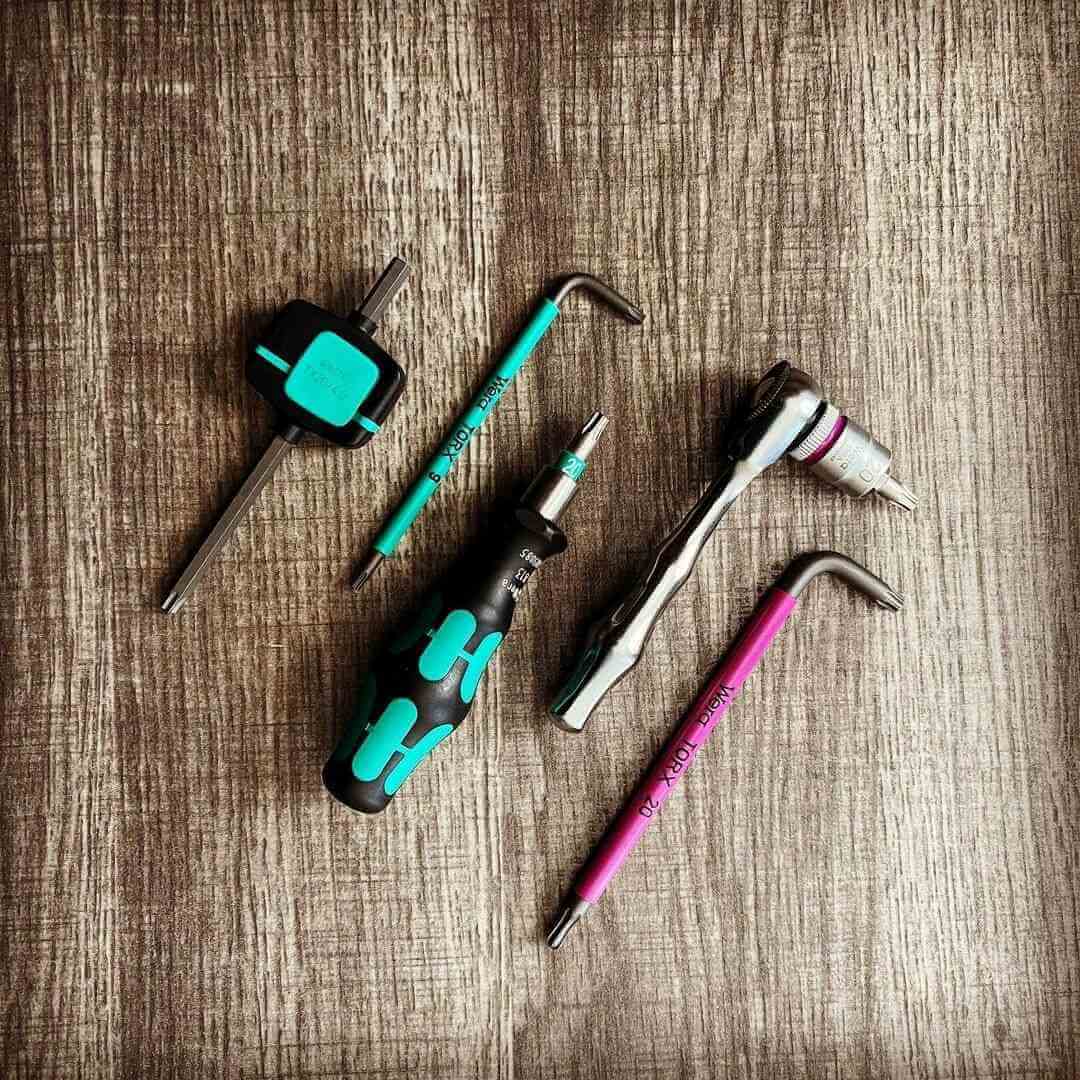
4 | Hex (Allen Wrench)
The Hex screw drive—also known as the hex key or Allen wrench— features a hexagon-shaped screwdriver head that fits into large screws and driving bolts that have a hexagonal recess.
If you have ever assembled Ikea furniture, you probably received a small, L-shaped Allen wrench or hex key in your box of supplies.
The hex screwdriver is an alternative to the hex key that features a traditional wide handle and skinny driver head, making it more comfortable to hold than small metal hex keys.
You can often find hex screws in bicycles, appliances, and simple furniture.
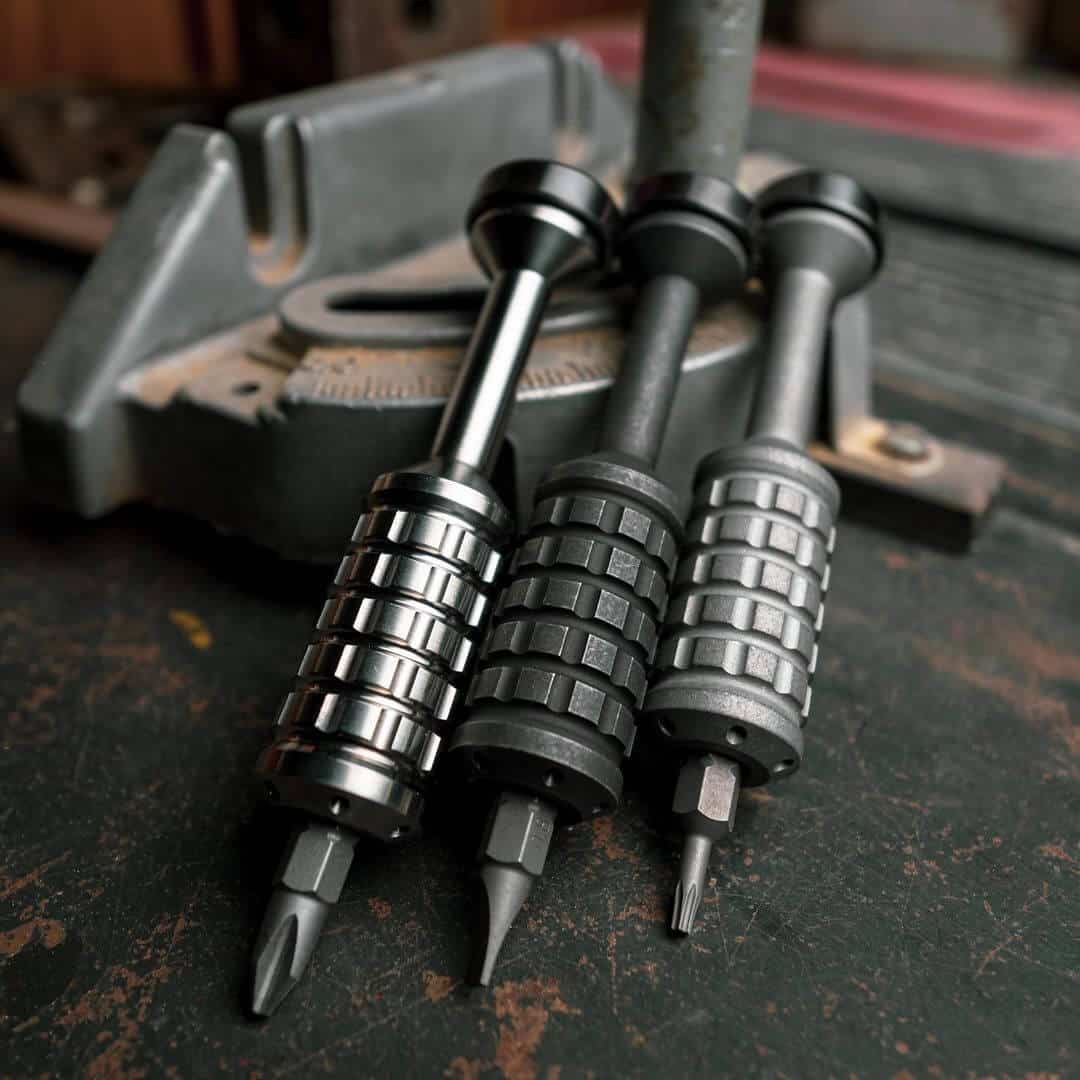
5 | Square Head
The squarehead, or Roberston, screwdriver is one of the lesser-known standard screwdrivers on our list. This screwdriver features a square-shaped tip that fits snugly into square-socket screw heads.
Squarehead screwdrivers are more prevalent in Canada than in the U.S., but you may still need to have access to one from time to time.
These screwdrivers have higher torque than any other standard screwdriver type, and they have begun to infiltrate the American automotive and furniture markets in recent years.
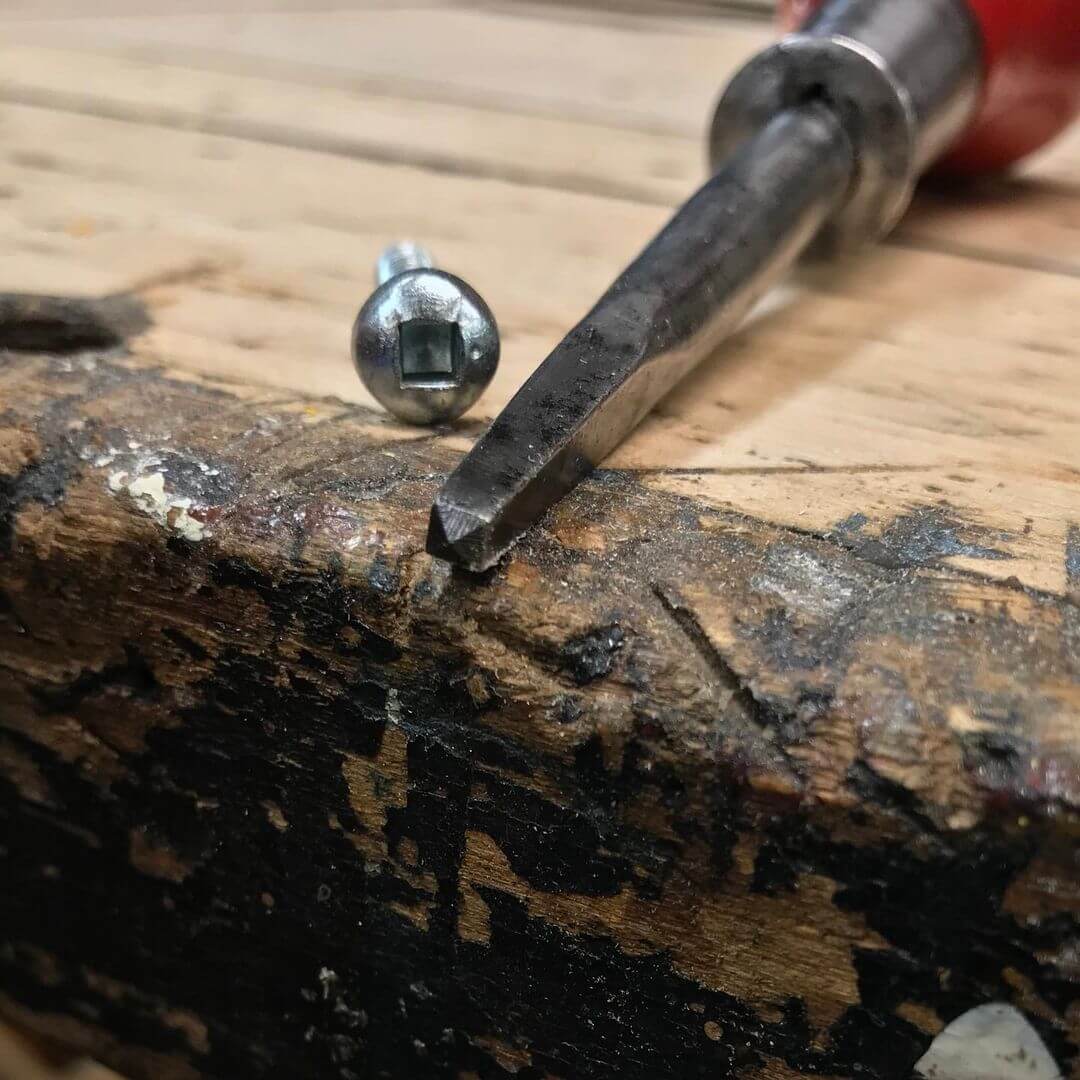
Specialized Screwdrivers
Now that we have examined the five most common types of screwdrivers, it’s time to dive into the lesser-known screw head types and their accompanying screwdrivers.
You don’t necessarily need to keep each of these screwdrivers in your toolbox to become a master craftsman.
But, if you’re attempting to build the ultimate tool chest, you should be aware that they may become necessary for specific applications.
6 | Frearson
Our first specialized screwdriver type is the Frearson screwdriver. This screwdriver features a pointed, cross-shaped tip that resembles the Phillips head at a glance. However, the Frearson has sharper edges, and its intersections come closer to a 90-degree angle.
Because the Frearson has a sharper, more angular point than the Phillips, it also allows for higher torque than its standard counterpart. You can sometimes use Frearson drivers to tighten Phillips screws, especially if the screw is slightly larger than the Frearson screwdriver tip.
One advantage of the Frearson screwdriver is that a smaller Frearson bit can adequately screw heads that are several sizes larger. As a result, you only need to keep one Frearson screwdriver bit on hand.
You will often find Frearson screws in applications that require precision and detail, such as marine hardware.
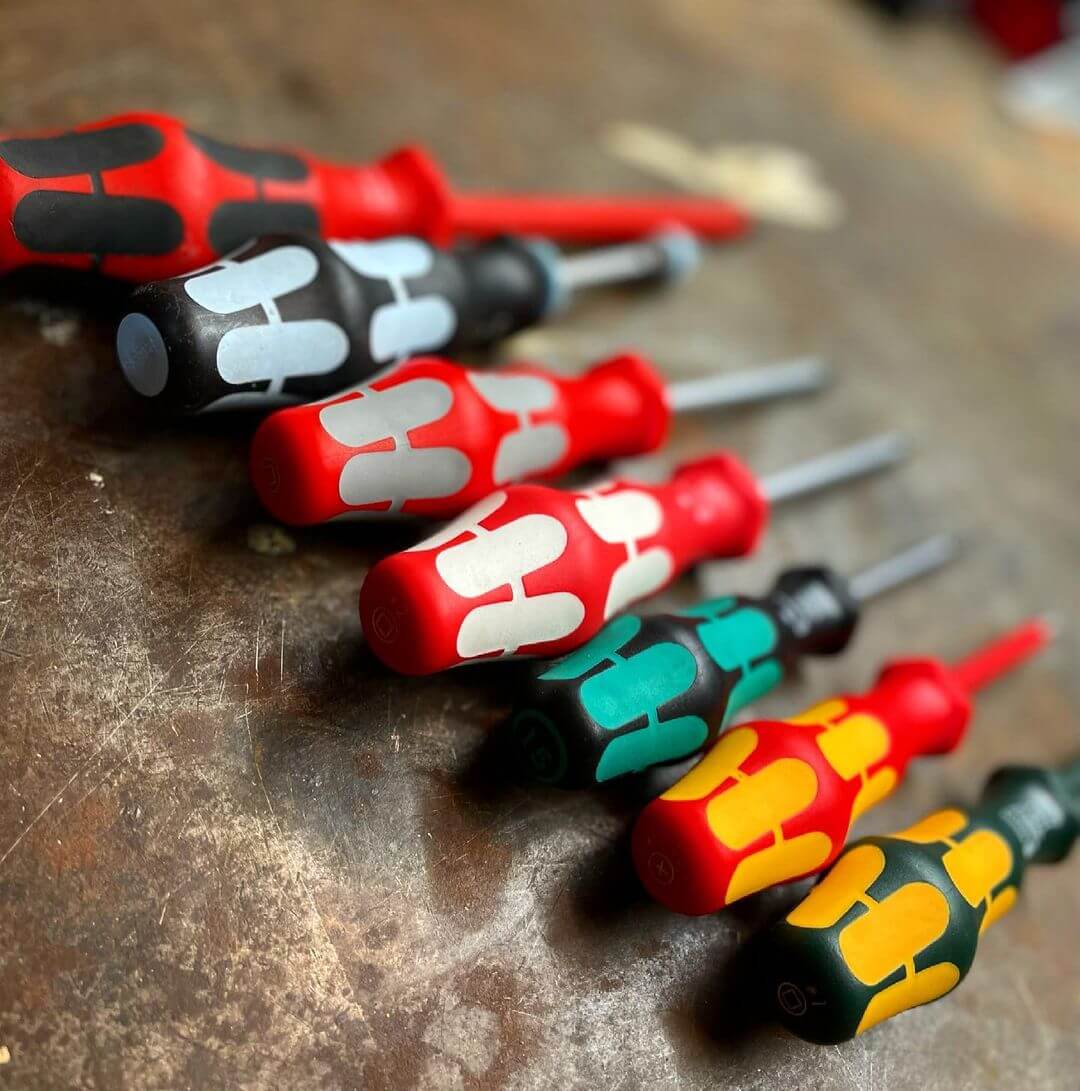
7 | Clutch Head
Clutch head screwdrivers feature a bow-tie-shaped tip that is wide on both ends and tapers into a narrower middle. The Type A clutch head features a circular recess in the middle, while the Type G head resembles a bow-tie or butterfly more closely.
Manufacturers designed clutch head drivers to fit flatheads and specific bowtie-shaped screws. You may see bowtie screws in mobile homes, recreational vehicles, or older automobiles.
You may also see a security version of clutch screws in public locations, such as bus stations or prisons. These screws use a unique tightening mechanism that is challenging to remove without the right clutch screwdriver.
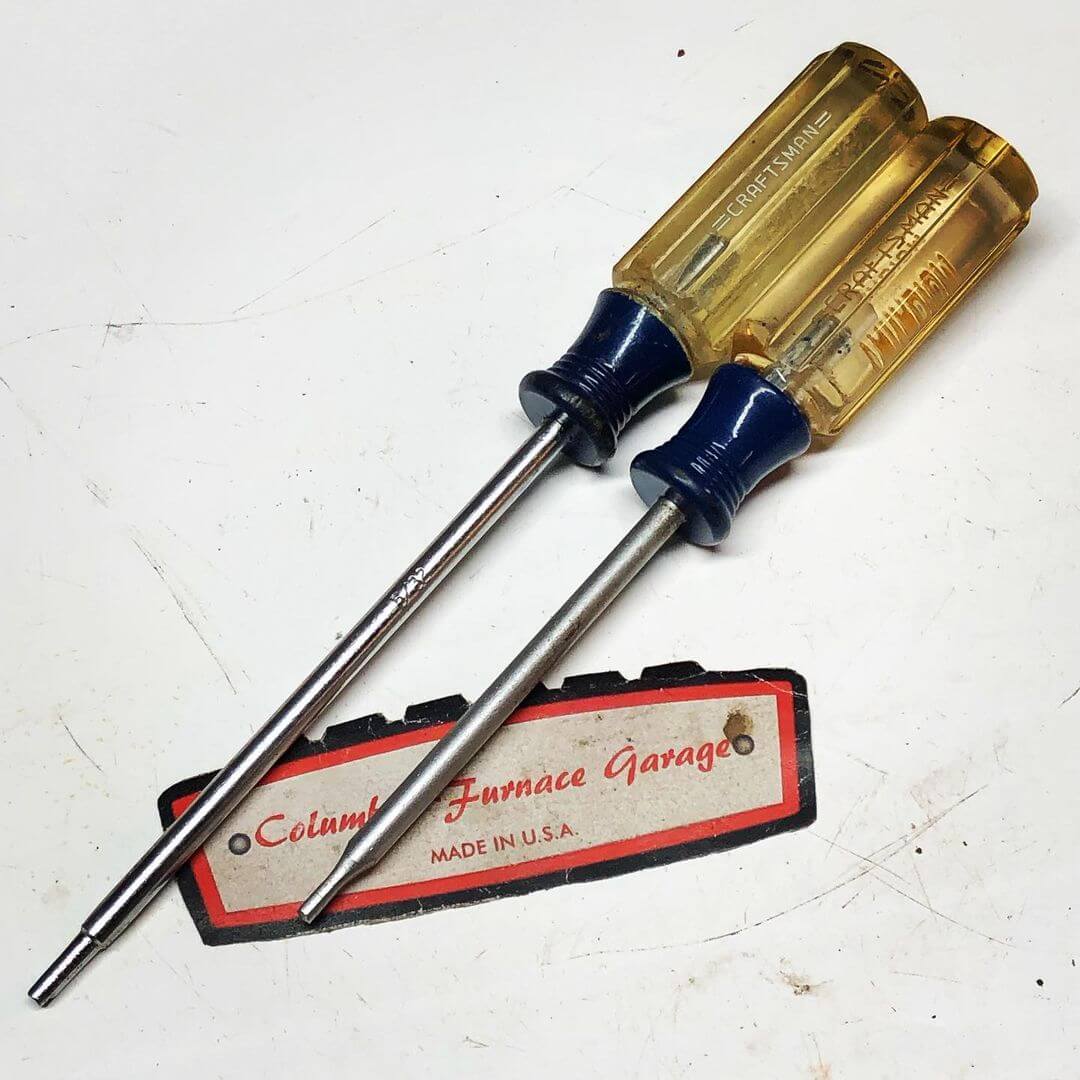
8 | Japanese Industrial Standard
Japenese Industrial Standard (JIS) screws are common in Japanese-made products, so keeping one in your toolkit may come in handy sooner rather than later. JIS screwdrivers resemble Frearson or Phillips screwdrivers with their thin, cross-shaped tips.
However, unlike Phillips drivers, JIS screwdrivers do not cam out when they reach a specific torque.
Some contractors have begun using JIS drivers in place of Phillips ones to avoid damaging Phillips screw heads when twisting with excessive force.
To distinguish themselves from Phillips screws, JIS screws often have a small dot next to their cross slot.
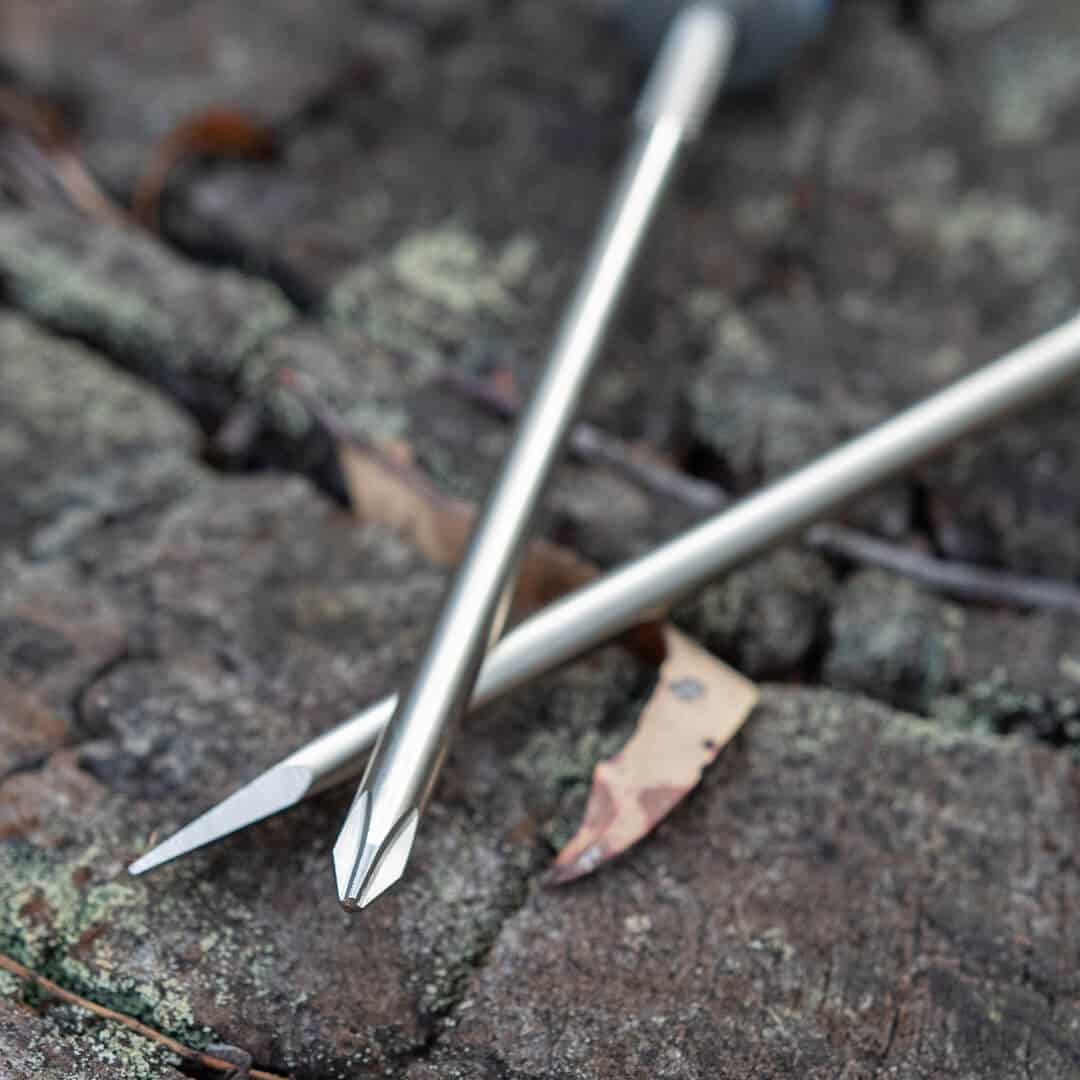
9 | Tri-Wing
The tri-wing screwdriver features a pinwheel-shaped tip with three linear wings extending out from a triangle.
You may see these screws in the aerospace, commercial aircraft, or consumer electronics industries.
Tri-wing screwdrivers can fit triangular-slotted and Opsit screws. To unscrew an Opsit screw, you will need to turn the tri-wing clockwise rather than counter-clockwise.
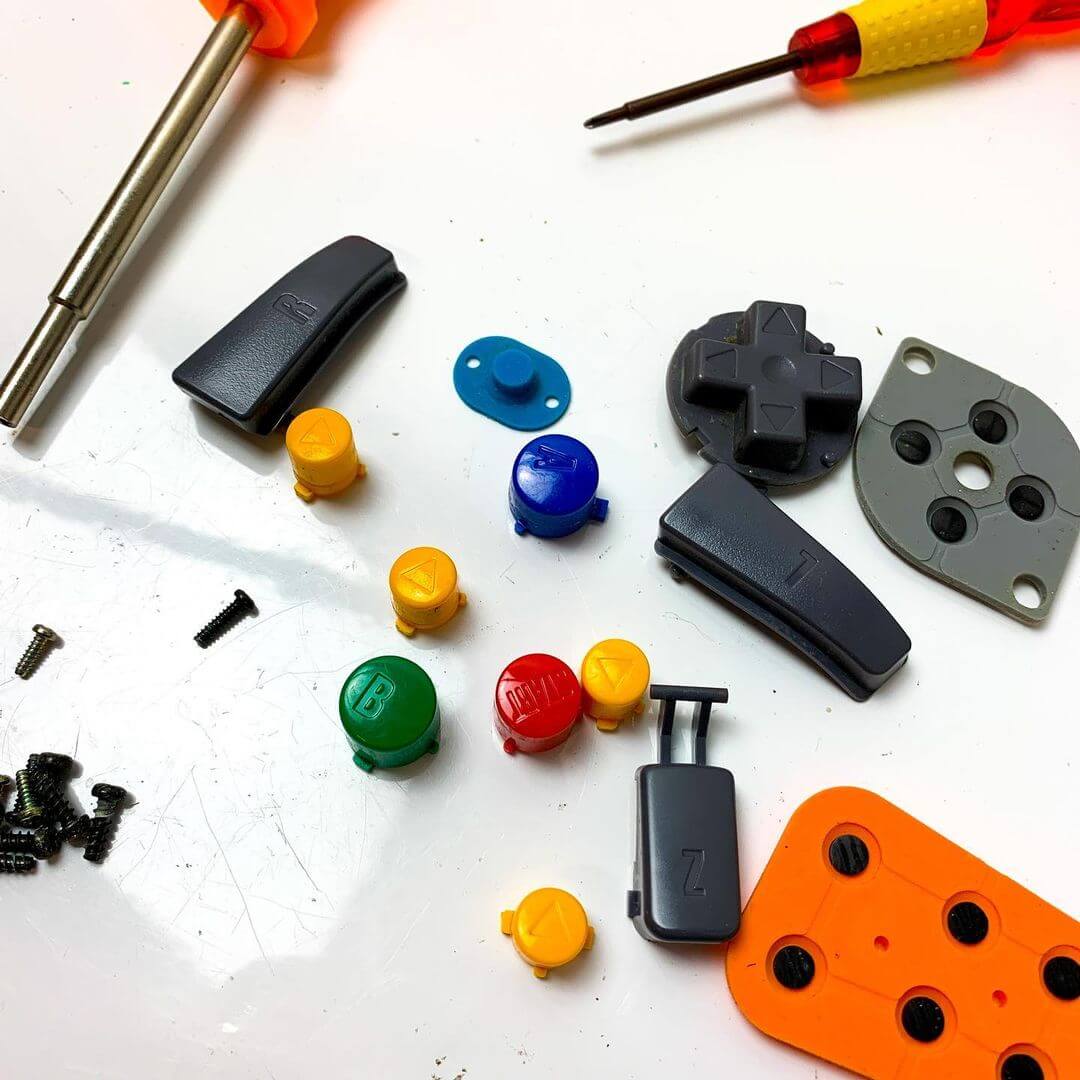
10 | Micro Tri-Angle
The tri-angle screwdriver resembles its name, featuring a triangular recess in the tip. You can find triangular screws in a wide range of toys, electronics, and appliances, but you may also see them in more specific applications, like elevators and golf clubs.
Tri-angle drivers are relatively uncommon, as most people use hex drives to grip triangular screws.
As a result, we don’t recommend adding this driver to your collection unless you encounter triangular screws frequently or want more control than a hex drive can offer.
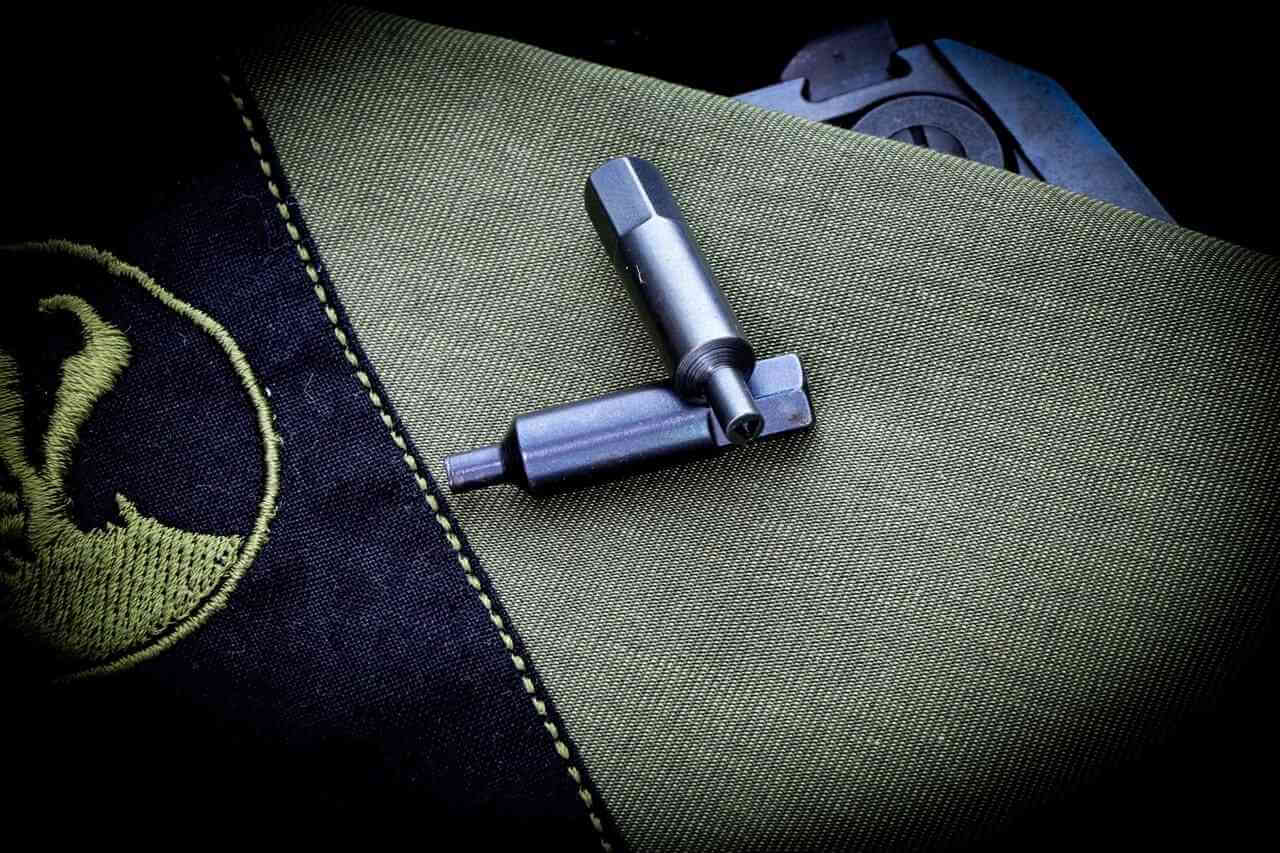
11 | Tri-Point
Tri-point drivers feature a blade with three points that create a Y-shape head on the tip of the driver.
Tri-point screws are popular in consumer electronics, and you can typically find them in smaller Apple and Nintendo products, such as iPods or handheld gaming systems.
However, you will rarely see these screws on larger electronic devices.
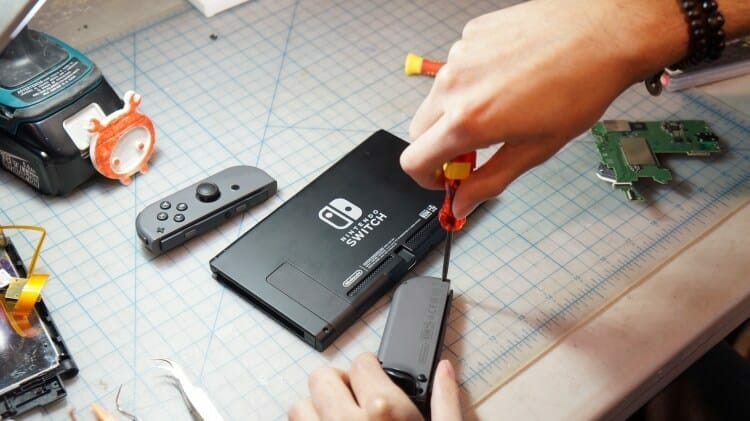
12 | Nut Driver
A nut driver (or hex socket screw drive) is similar to a hex driver in that its tip is hexagonal. However, this screw drive type contains a socket instead of a tip or blade, so you can use it the same way you would a socket wrench.
If you remove recessed bolts frequently, you may appreciate having a nut driver on hand instead of a traditional socket wrench.
Socket wrenches tend to be L-shaped, making it difficult to reach and unscrew recessed bolts in awkward locations with a conventional wrench.
However, the nut driver’s large, linear handle allows you to navigate tight areas with little clearance.
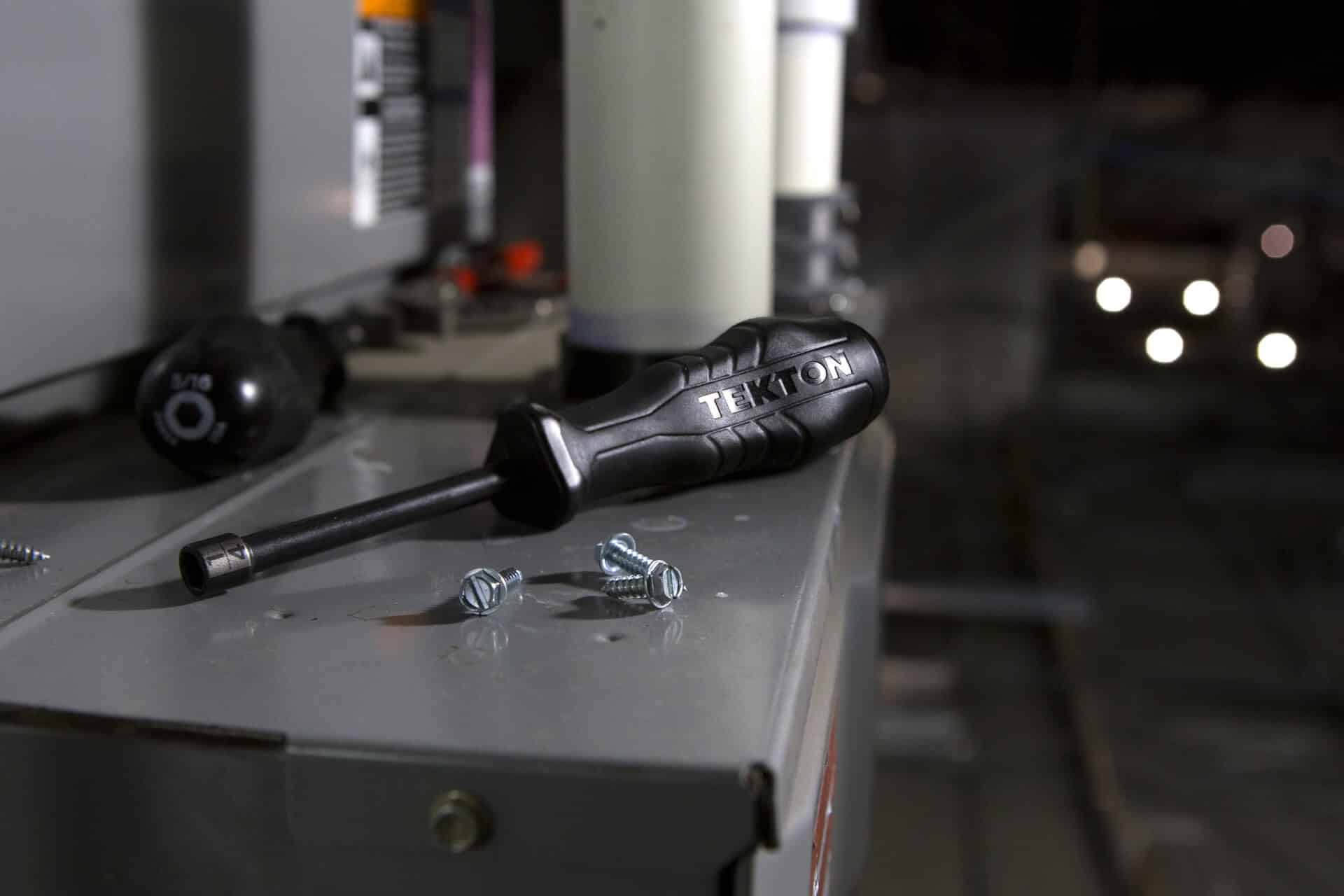
13 | Pozidriv
Pozidriv (or “Pozi”) screwdrivers feature a tip design that resembles a snowflake. This screwdriver tip includes a cross-shaped blade with an “X” shape overlaying the cross tip.
Like several other types of screwdrivers on our list, the Pozidriv resembles a Phillips screwdriver to an extent.
However, you should not try to use these two drivers interchangeably, as their designs are different enough that you could accidentally damage the screw by using the wrong driver.
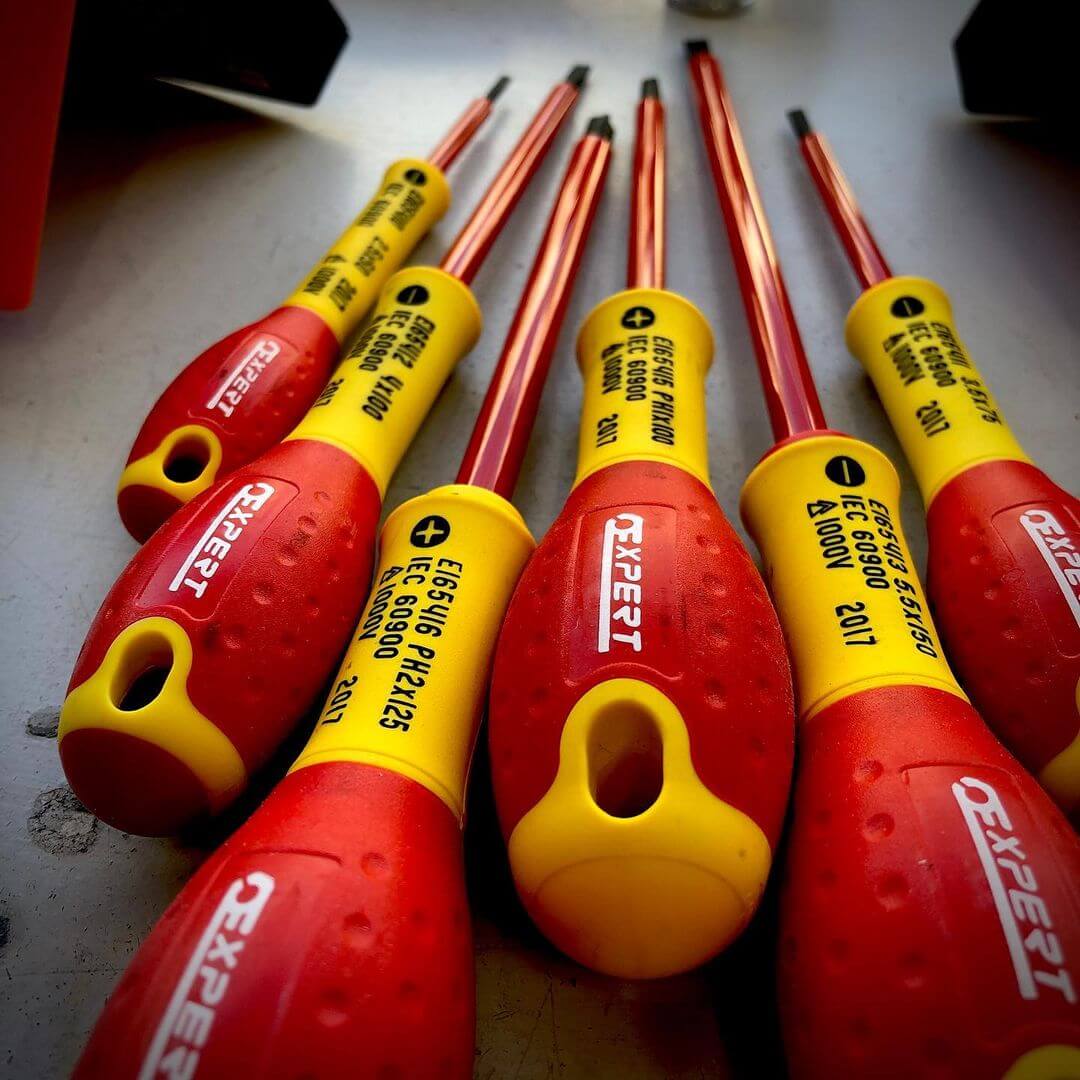
14 | Spanner
Spanner (or “snake-eyes”) screwdrivers may be the most unique-looking types of screwdrivers on our list. These screwdriver tips resemble a tuning fork, as they have two sharp tines extending out of the shank.
Spanner screws are identifiable by the two small holes on their heads. Common uses for spanner screws are in bus stops, elevators, subways, and public restrooms.
You can often find spanner screws in applications that need to be secure and tamper-proof, as pedestrians are unlikely to be able to remove these screws without a specialized type of screwdriver.
Because these screws are challenging to remove, they fall into the “tamper-resistant” screw category. You may see spanner screwdrivers under informal names such as pig nose, twin hole, or drilled head drivers.
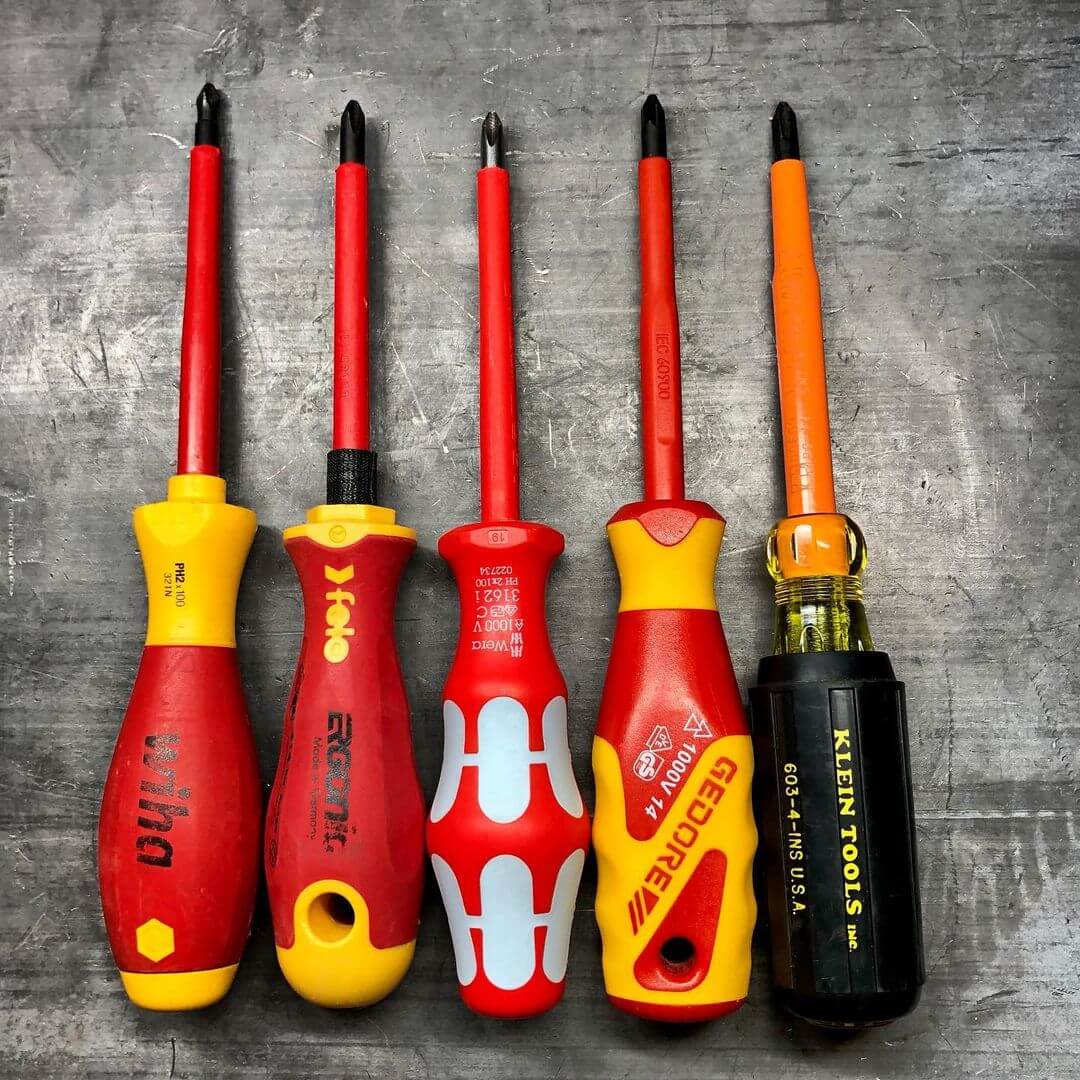
In Summary
A few standard screwdrivers and one or two specialized ones will suit your everyday needs, as you’re still going to need a bunch of different types of hammers, pliers, and other hand tools.
Key Takeaways:
Although, knowing the different types of screwdrivers you may encounter will help you identify the hand tools you need to pick up before beginning a new project.

